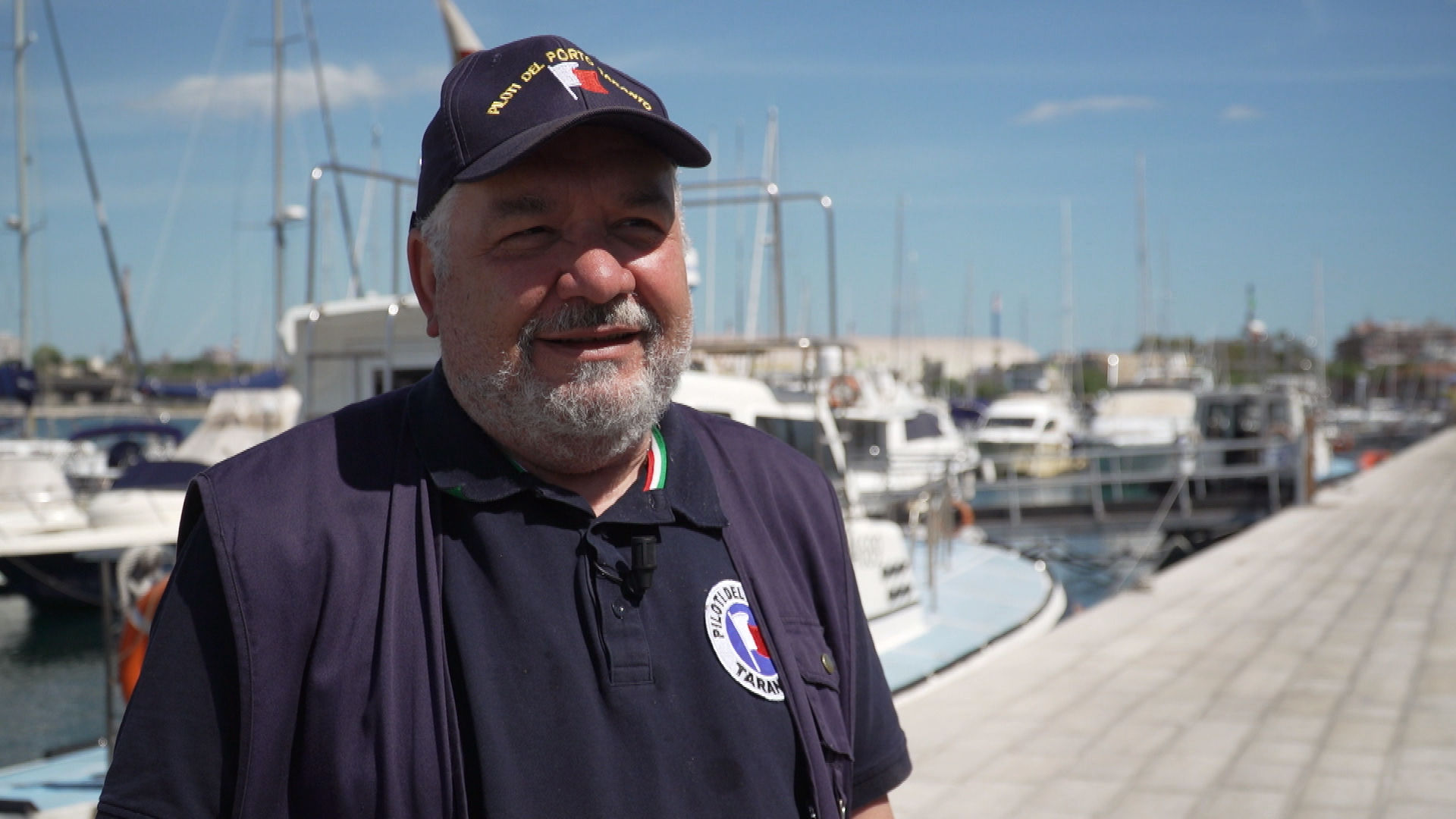Piloti interview
The pilots
I am Captain Salvatore Eligio, Chief Pilot of the Port of Taranto for the last few years.
Who are the pilots? Pilots are the first to board the ships and the last to disembark when the ships leave.
The main task of the pilots is to take care of the entry and exit of the ships, and the mooring of the ships at the quays.
Actually the pilot is the one who knows all the depths of the harbour and knows exactly, according to the type of ship and the draught it has, where to pass to go to the berth or where precisely to pass to leave the port.
The job of a pilot is quite a complex one, actually requiring admission through a public exam and after a one-year training period, passing a series of exams, you become an actual pilot.
In Taranto we have six pilots and five crew, and we have three working vessels, it’s a 24-hour job, without any holidays for 365 days a year.
Manoeuvres in cooperation with moorers and tugs
When the ship arrives it contacts the pilot by radio, confirming the time of arrival at the pilots’ station, let’s say an appointment.
The pilot goes out with the pilot boat, meets the ship, boards the ship by means of the “biscaggina”, we board only with biscaggine, rope ladders, and basically climbs up onto the ship and there he suggests to the captain all the routes to follow, the speed to be maintained as you enter the port.
If it’s a ship that doesn’t need to use tugs, then the pilot contacts the moorers who send a team to pass the mooring lines from the ship to the quay, and if there is a need for tugs, the required number of moorers come out, or indeed in Taranto we have, for a certain type of vessel, a compulsory minimum number and then we start manoeuvring with the tugs.
Which is why there’s a whole phase from when you get on board to when you moor there’s a period of time that varies from just over an hour, to even three hours of manoeuvring.
We say: the technical-nautical services eventually become a team, they become as one, everyone’s goal is simply to make the port work well so that it always moves forward and nothing ever happens.
The evolution of ships from the pilots’ perspective
When I arrived here 25 years ago, let’s say the types of ships were completely different, broadly speaking.
And the evolution of ships has been impressive in the last 20 years.
Ships with transverse propellers, ships with special rudders, bridges with state-of-the-art instrumentation, the introduction of ship monitoring systems all over the world, i.e. the systems for ship control and safety have really evolved in an impressive way.
The most delicate moments during manoeuvres
One of the most delicate moments as far as the work of the pilot is concerned, in this port, is undoubtedly themooring of large ships, where it is necessary to use a certain number of tugs to perform the manoeuvre successfully.
And the other fairly critical point is, above all, on days with bad weather when you have to manoeuvre with all kinds of ships, even small ones, but which have great difficulty in approaching the docks in the adverse weather conditions.
That’s why these are the most delicate moments, because you must always operate without causing damage, bumping into the docks or, above all, hurting anyone.
You have to love this job to do it because otherwise you wouldn’t do it, because the risks are extremely high: boarding and getting off ships in bad weather is not easy and you can risk your life.
*** Automatically generated subtitles ***


